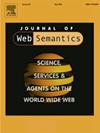What can knowledge graph do for few-shot named entity recognition
IF 3.1
3区 计算机科学
Q3 COMPUTER SCIENCE, ARTIFICIAL INTELLIGENCE
引用次数: 0
Abstract
Due to its extensive applicability in various downstream domains, few-shot named entity recognition (NER) has attracted increasing attention, particularly in areas where acquiring sufficient labeled data poses a significant challenge. Recent studies have highlighted the potential of knowledge graphs (KGs) in enhancing natural language processing (NLP) tasks. However, a comprehensive understanding of whether and how KGs can effectively improve the NER performance under low-resource conditions remains elusive. In this paper, for the first time, we quantitatively investigate the effects of different kinds of extra KG features for few-shot NER. We enable our analysis by aggregating extra KG features into an NER framework. Through extensive experiments, we find that incorporating class features yields the best performance. To fully explore the potential of class features from KGs, we propose a novel network architecture, named KGen, to jointly leverage KG-based knowledge from both the input sentence side and the label semantic side for few-shot NER.The efficacy of our proposed method is validated through extensive experiments on five challenging datasets.
知识图谱对少量的命名实体识别有什么帮助
由于其在各个下游领域的广泛适用性,少射命名实体识别(NER)越来越受到关注,特别是在获取足够的标记数据构成重大挑战的领域。最近的研究强调了知识图在增强自然语言处理(NLP)任务中的潜力。然而,对于KGs是否以及如何在低资源条件下有效改善NER性能的全面理解仍然难以捉摸。在本文中,我们首次定量地研究了不同类型的额外KG特征对少射NER的影响。我们通过将额外的KG特征聚合到NER框架中来实现我们的分析。通过大量的实验,我们发现结合类特征可以产生最好的性能。为了充分挖掘来自KGs的类特征的潜力,我们提出了一种新的网络架构KGen,以联合利用来自输入句子侧和标签语义侧的基于KGs的知识来进行少拍NER。通过在五个具有挑战性的数据集上进行大量实验,验证了我们提出的方法的有效性。
本文章由计算机程序翻译,如有差异,请以英文原文为准。
求助全文
约1分钟内获得全文
求助全文
来源期刊

Journal of Web Semantics
工程技术-计算机:人工智能
CiteScore
6.20
自引率
12.00%
发文量
22
审稿时长
14.6 weeks
期刊介绍:
The Journal of Web Semantics is an interdisciplinary journal based on research and applications of various subject areas that contribute to the development of a knowledge-intensive and intelligent service Web. These areas include: knowledge technologies, ontology, agents, databases and the semantic grid, obviously disciplines like information retrieval, language technology, human-computer interaction and knowledge discovery are of major relevance as well. All aspects of the Semantic Web development are covered. The publication of large-scale experiments and their analysis is also encouraged to clearly illustrate scenarios and methods that introduce semantics into existing Web interfaces, contents and services. The journal emphasizes the publication of papers that combine theories, methods and experiments from different subject areas in order to deliver innovative semantic methods and applications.
 求助内容:
求助内容: 应助结果提醒方式:
应助结果提醒方式:


